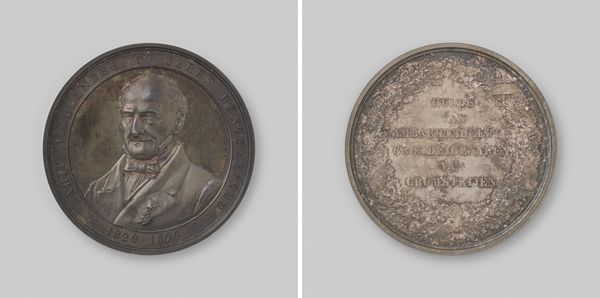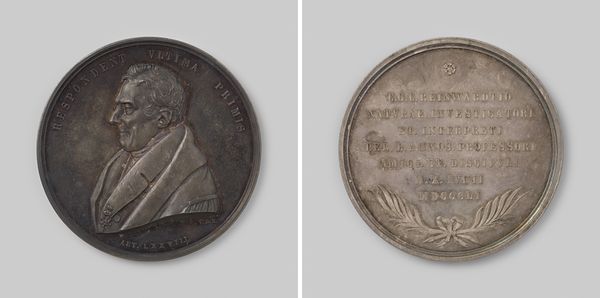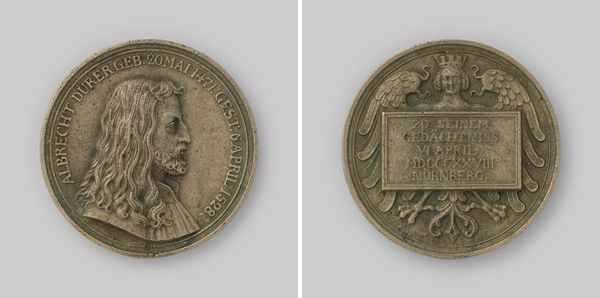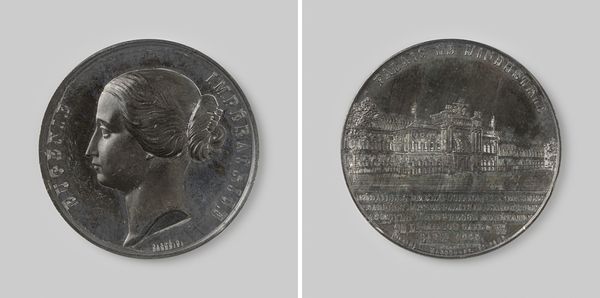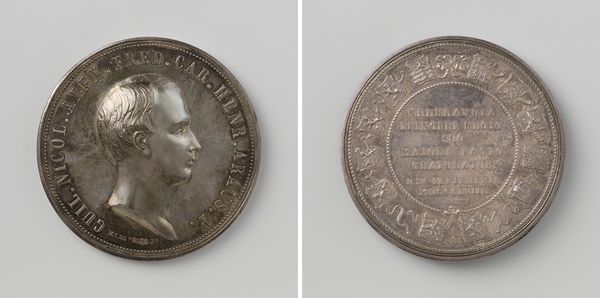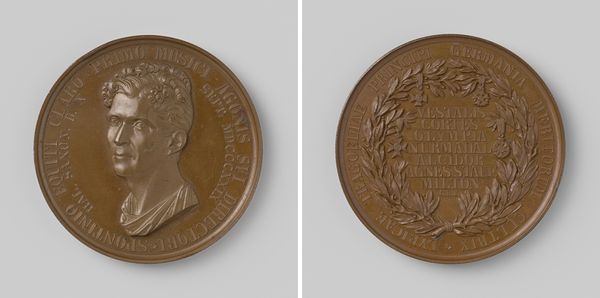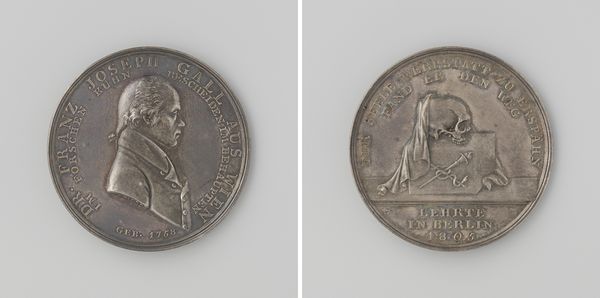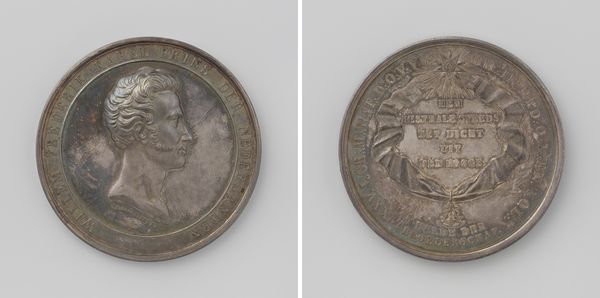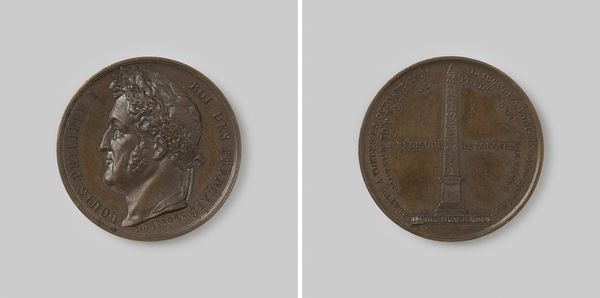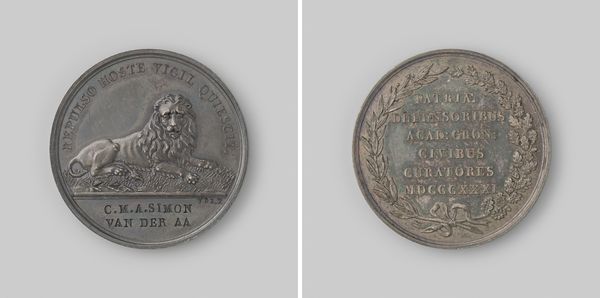
Verdrag van Altona tussen de Christiaan V van Denemarken en Christiaan Albrecht, hertog van Holstein-Gottorp 1689
0:00
0:00
metal, relief, engraving
#
medal
#
baroque
#
metal
#
relief
#
history-painting
#
engraving
Dimensions: diameter 5.4 cm, weight 53.85 gr
Copyright: Rijks Museum: Open Domain
Editor: This intriguing metal relief, created by Arvid Karlsteen in 1689, commemorates the Treaty of Altona. What stands out to me is the raw quality of the engraving – it feels almost industrial. What catches your eye? Curator: The very material of the medal – the metal itself – tells a powerful story. The relative worth of the silver (or possibly pewter) hints at the economics underlying peace treaties. And what does the choice of casting tell us? A readily reproducible image speaks to wide dissemination, of course, to make accessible a message about reconciliation between Christian V of Denmark and Christian Albrecht, Duke of Holstein-Gottorp. This wasn’t some isolated aesthetic experience; it’s directly tied to social and political labor. Editor: That’s fascinating. So, the choice of metal isn’t just about aesthetics, but about accessibility and wealth too? Curator: Precisely! And look at the hands clasping – a symbol of agreement, yes, but rendered through the labor of a craftsman working with a specific, socially-charged material. Was there an existing labor market for medals? Editor: I see your point. The medal isn’t just a symbol; it's a product of its time, a tangible representation of material resources, labor and political strategy. The medium is the message, in more ways than one, it seems! Curator: Absolutely! And examining the wear and tear on the metal also informs our understanding, and even how it changes hands as a transaction to further spread influence. It pushes us to question how such an artifact blurs boundaries between high art, craft, and even propaganda. What have you learned looking more closely at the processes? Editor: It reframes the work entirely. Thinking about the creation, circulation, and social context transforms it from just a historical document into a cultural artifact deeply embedded in the material realities of the time. Thanks for your insights!
Comments
No comments
Be the first to comment and join the conversation on the ultimate creative platform.
